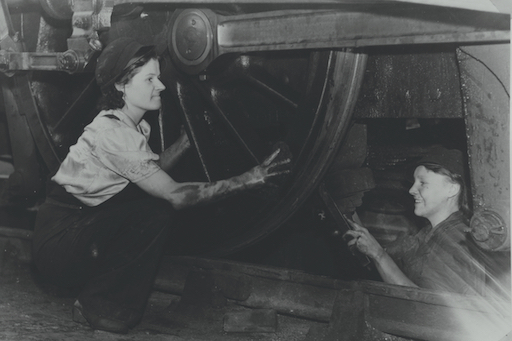
Great Hall
Women's Work on Site

Women engine cleaners, Heaton, 1942. Science Museum Group. Image no. 1994-7245_40_95. ©Mirrorpix.
Looking out across this former engine shed, we’re able to imagine the thousands of staff members that have worked here throughout the years. Starting when the building opened in 1878 through to its closure in the early 1970s, this would’ve been a place of constant activity.
As we look around however, a significant absence becomes painfully clear, as it’s unlikely we have pictured many women. A product of the Industrial Revolution, the rail industry was structured in a way that enforced family dynamics of the nineteenth century. Sons would follow their fathers into work as railwaymen and labourers, while women stayed at home to look after the house and children.
This is not to say that women do not feature in York’s railway story, far from it in fact. But as the twentieth century approached, the only people we would have seen working in the engine shed in front of us would’ve been men.
This changed dramatically following the outbreak of the First World War in 1914. The North Eastern Railway, the company that owned the shed, was forced to value women workers as men went abroad to fight. Against fierce opposition from male employees and trade unions, women stepped foot in the engine shed for the first time, typically employed as locomotive cleaners. Sadly, this did not prove a catalyst for change once the war had ended, and women were removed from their posts after the men returned home.
Progress had been made, though. And during the Second World War engine sheds up and down the country were again full of women workers – like Vera Jones, an apprentice fitter at Crewe, and Marjorie Pateman, a lathe operator at Wolverton – this time providing essential engineering work to the locos as well as cleaning them.
Today women make up around one in five of the nation’s railway workforce. And while great strides have been made since the end of the Second World War, there is still more to be done. Companies like Network Rail are engaging with schools and colleges to encourage young women to consider a career in the industry. Similarly, support organisations like Women in Rail provide networking opportunities to help improve diversity in the sector. By establishing a more equal rail industry, we may benefit all members of society.